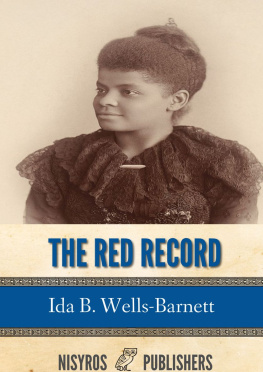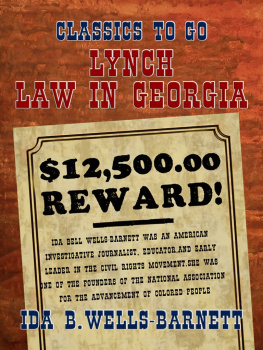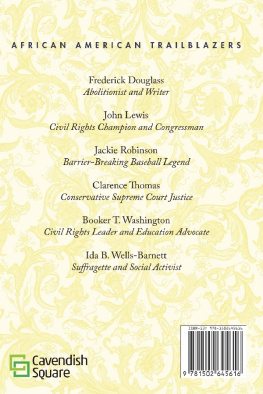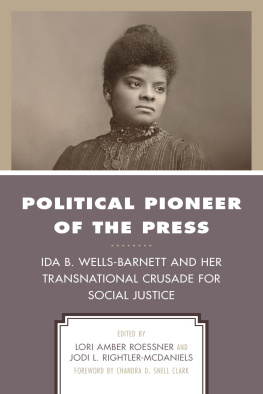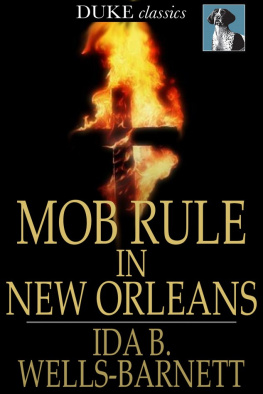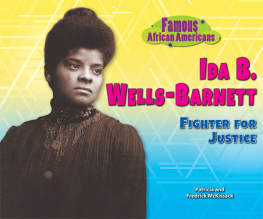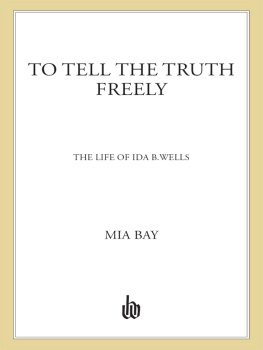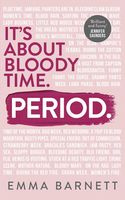INTRODUCTION
Immediately after the awful barbarism which disgraced the State of Georgia in April of last year, during which time more than a dozen colored people were put to death with unspeakable barbarity, I published a full report showing that Sam Hose, who was burned to death during that time, never committed a criminal assault, and that he killed his employer in self-defense.
Since that time I have been engaged on a work not yet finished, which I interrupt now to tell the story of the mob in New Orleans, which, despising all law, roamed the streets day and night, searching for colored men and women, whom they beat, shot and killed at will.
In the account of the New Orleans mob I have used freely the graphic reports of the New Orleans Times-Democrat and the New Orleans Picayune. Both papers gave the most minute details of the week's disorder. In their editorial comment they were at all times most urgent in their defense of law and in the strongest terms they condemned the infamous work of the mob.
It is no doubt owing to the determined stand for law and order taken by these great dailies and the courageous action taken by the best citizens of New Orleans, who rallied to the support of the civic authorities, that prevented a massacre of colored people awful to contemplate.
For the accounts and illustrations taken from the above-named journals, sincere thanks are hereby expressed.
Scene of the Crime
The publisher hereof does not attempt to moralize over the deplorable condition of affairs shown in this publication, but simply presents the facts in a plain, unvarnished, connected way, so that he who runs may read. We do not believe that the American people who have encouraged such scenes by their indifference will read unmoved these accounts of brutality, injustice and oppression. We do not believe that the moral conscience of the nationthat which is highest and best among uswill always remain silent in face of such outrages, for God is not dead, and His Spirit is not entirely driven from men's hearts.
When this conscience wakes and speaks out in thunder tones, as it must, it will need facts to use as a weapon against injustice, barbarism and wrong. It is for this reason that I carefully compile, print and send forth these facts. If the reader can do no more, he can pass this pamphlet on to another, or send to the bureau addresses of those to whom he can order copies mailed.
Besides the New Orleans case, a history of burnings in this country is given, together with a table of lynchings for the past eighteen years. Those who would like to assist in the work of disseminating these facts, can do so by ordering copies, which are furnished at greatly reduced rates for gratuitous distribution. The bureau has no funds and is entirely dependent upon contributions from friends and members in carrying on the work.
Ida B. Wells-Barnett
Chicago, Sept. 1, 1900
MOB RULE IN NEW ORLEANS
SHOT AN OFFICER
The bloodiest week which New Orleans has known since the massacre of the Italians in 1892 was ushered in Monday, July 24, by the inexcusable and unprovoked assault upon two colored men by police officers of New Orleans. Fortified by the assurance born of long experience in the New Orleans service, three policemen, Sergeant Aucoin, Officer Mora and Officer Cantrelle, observing two colored men sitting on doorsteps on Dryades street, between Washington Avenue and 6th Streets, determined, without a shadow of authority, to arrest them. One of the colored men was named Robert Charles, the other was a lad of nineteen named Leonard Pierce. The colored men had left their homes, a few blocks distant, about an hour prior, and had been sitting upon the doorsteps for a short time talking together. They had not broken the peace in any way whatever, no warrant was in the policemen's hands justifying their arrest, and no crime had been committed of which they were the suspects. The policemen, however, secure in the firm belief that they could do anything to a Negro that they wished, approached the two men, and in less than three minutes from the time they accosted them attempted to put both colored men under arrest. The younger of the two men, Pierce, submitted to arrest, for the officer, Cantrelle, who accosted him, put his gun in the young man's face ready to blow his brains out if he moved. The other colored man, Charles, was made the victim of a savage attack by Officer Mora, who used a billet and then drew a gun and tried to kill Charles. Charles drew his gun nearly as quickly as the policeman, and began a duel in the street, in which both participants were shot. The policeman got the worst of the duel, and fell helpless to the sidewalk. Charles made his escape. Cantrelle took Pierce, his captive, to the police station, to which place Mora, the wounded officer, was also taken, and a man hunt at once instituted for Charles, the wounded fugitive.
In any law-abiding community Charles would have been justified in delivering himself up immediately to the properly constituted authorities and asking a trial by a jury of his peers. He could have been certain that in resisting an unwarranted arrest he had a right to defend his life, even to the point of taking one in that defense, but Charles knew that his arrest in New Orleans, even for defending his life, meant nothing short of a long term in the penitentiary, and still more probable death by lynching at the hands of a cowardly mob. He very bravely determined to protect his life as long as he had breath in his body and strength to draw a hair trigger on his would-be murderers. How well he was justified in that belief is well shown by the newspaper accounts which were given of this transaction. Without a single line of evidence to justify the assertion, the New Orleans daily papers at once declared that both Pierce and Charles were desperadoes, that they were contemplating a burglary and that they began the assault upon the policemen. It is interesting to note how the two leading papers of New Orleans, the Picayune and the Times-Democrat, exert themselves to justify the policemen in the absolutely unprovoked attack upon the two colored men. As these two papers did all in their power to give an excuse for the action of the policemen, it is interesting to note their versions. The Times-Democrat of Tuesday morning, the twenty-fifth, says:
Two blacks, who are desperate men, and no doubt will be proven burglars, made it interesting and dangerous for three bluecoats on Dryades street, between Washington Avenue and Sixth Street, the Negroes using pistols first and dropping Patrolman Mora. But the desperate darkies did not go free, for the taller of the two, Robinson, is badly wounded and under cover, while Leonard Pierce is in jail.
For a long time that particular neighborhood has been troubled with bad Negroes, and the neighbors were complaining to the Sixth Precinct police about them. But of late Pierce and Robinson had been camping on a door step on the street, and the people regarded their actions as suspicious. It got to such a point that some of the residents were afraid to go to bed, and last night this was told Sergeant Aucoin, who was rounding up his men. He had just picked up Officers Mora and Cantrell, on Washington Avenue and Dryades Street, and catching a glimpse of the blacks on the steps, he said he would go over and warn the men to get away from the street. So the patrolmen followed, and Sergeant Aucoin asked the smaller fellow, Pierce, if he lived there. The answer was short and impertinent, the black saying he did not, and with that both Pierce and Robinson drew up to their full height.



